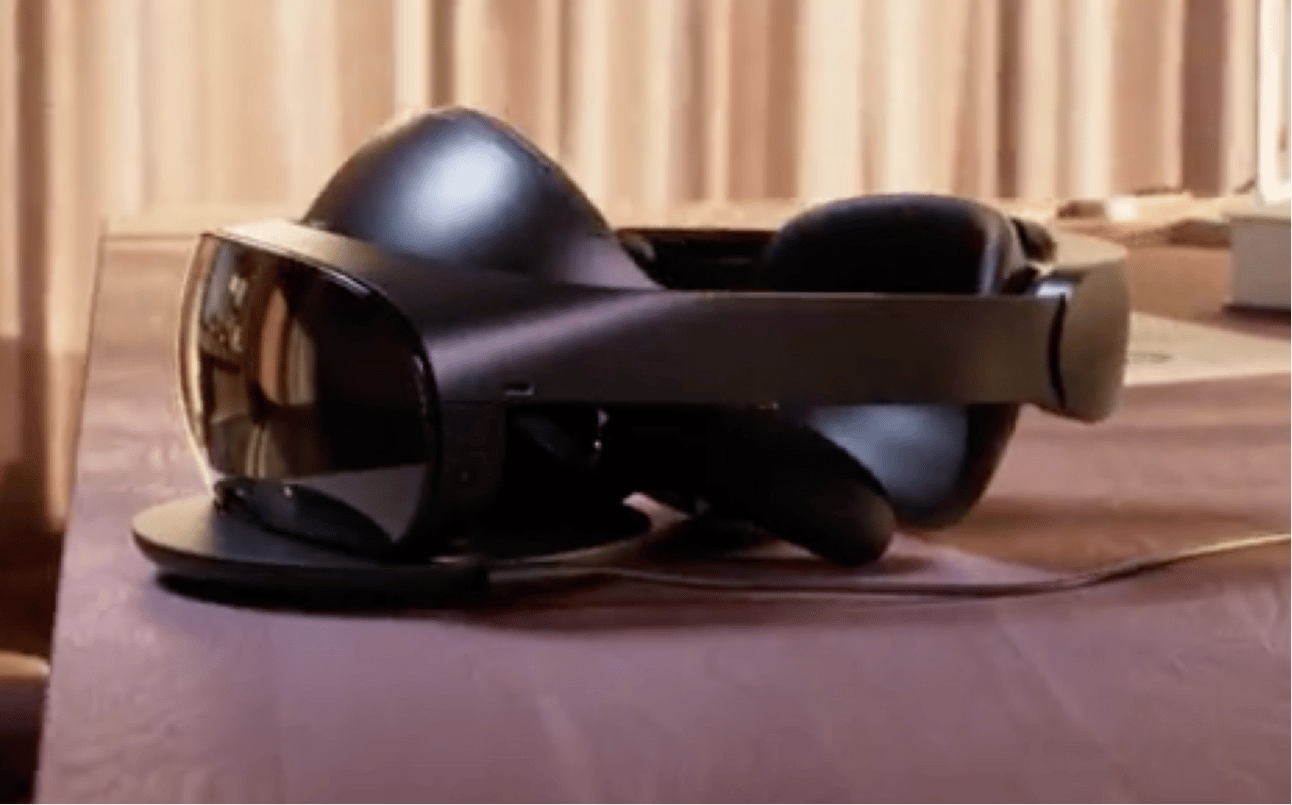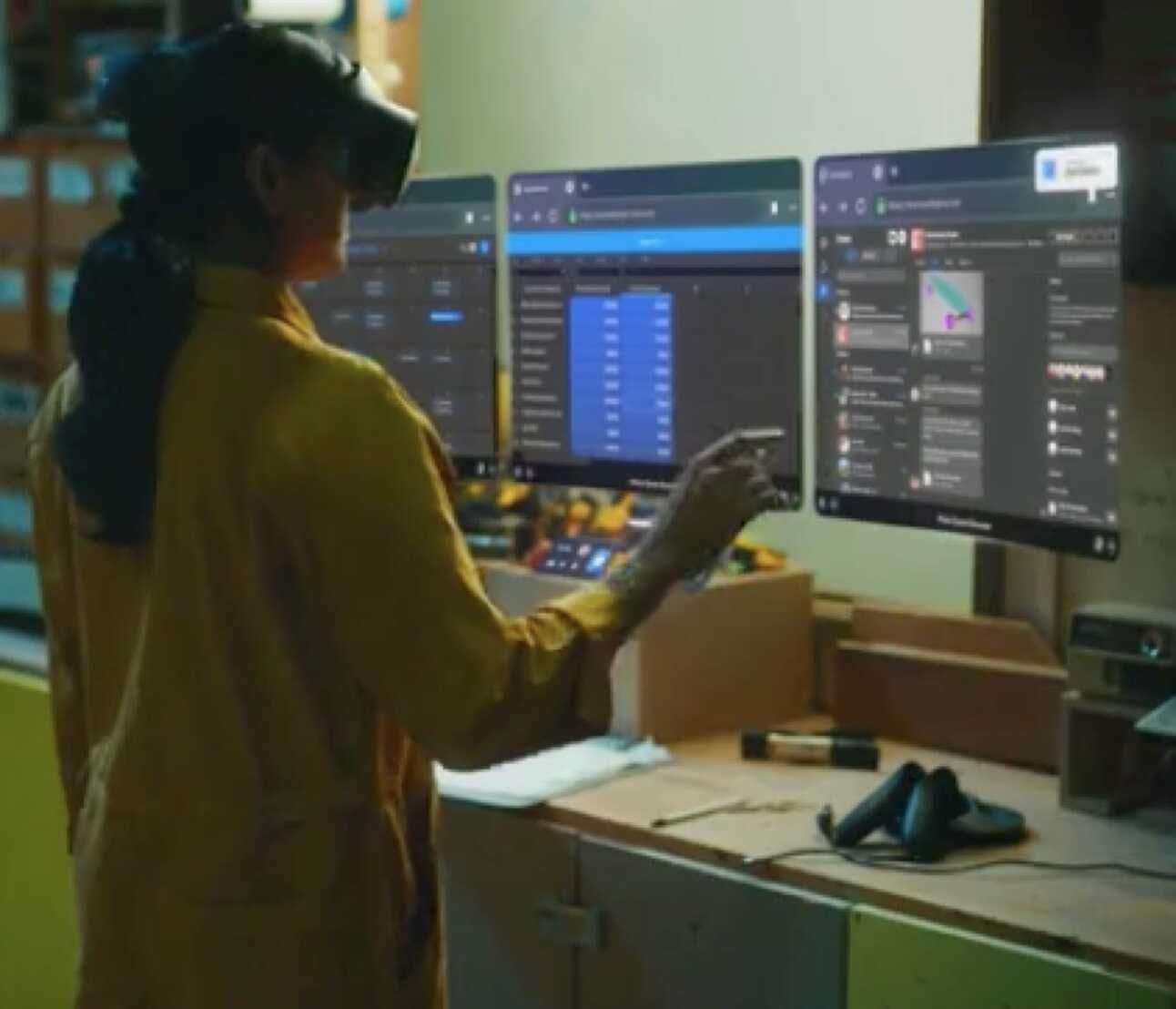Click here for a Savvy Trader-powered view of my current portfolio.
I wanted to take a minute to thank all you readers. Your support from across the globe (50+ countries!!) means the world to me. I am eternally grateful and fully dedicated to offering you as much value as I possibly can. I work for you. I constantly think about giving you more value. That will not change. Onward and upward, friends.
1. Meta Platforms (META) -- 2022 Create Conference
On Microsoft and Accenture:
Perhaps the highlight of the event was a new partnership announced between Meta and Microsoft. Surprisingly, Microsoft CEO Satya Nadella participated in the conference to share the news and express his excitement. Considering Meta sees work and productivity as such massive pieces of Quest’s (the headset hardware’s) future, it needed the tools and apps that consumers know and love to work perfectly in that environment. This new collaboration will make that happen.
“The Metaverse will transform everything, from telehealth to remote maintenance to gaming and the way we work… that’s why we’re bringing together the power of our most popular productivity tools with the new [Quest Pro] device you announced.” -- Nadella
Pieces of the announcement:
- Microsoft Teams and “the full power of” 365 (Word, Excel etc.) are being integrated into Quest Pro VR to “give people new ways to connect and collaborate as if you’re in person” per Satya. Meta Avatars will also be usable in Teams Meetings and consumers will be able to hop directly into a Teams meeting from the Metaverse.
- Azure’s (Microsoft’s public cloud offering) Active Directory will support Meta Quest and Quest Pro. This -- per Nadella -- means “larger companies wanting to use these devices can be confident that all security and management options available on PC will carry over to VR.”
- Microsoft’s X Cloud gaming product will allow users to play Xbox games on Quest with an Xbox controller and a massive virtual screen.
This is a deep partnership.
Accenture -- a global consulting firm readily embracing the Metaverse -- will also join this partnership. Accenture has already deployed 60,000 Quest headsets within its organization which makes it an ideal ambassador for spreading the word to clients. And with that client base representing 75% of the Fortune Global 500, this invariably will open doors to future deployment.
Accenture’s role will be working with Microsoft and Meta to transform this cutting edge tech into countless, real-world use cases that can make enterprises function more smoothly. The next step here is a “Quest for Business” launch next year. This will be a subscription business (including hardware and key apps) model for enterprises to purchase. If the program takes off, it could make the Oculus revenue stream more reliable and recurring.
On Other New Partnerships Announced:
- Meta’s VP of Metaverse (Vishal Shan) announced a new “multi-year collaboration” with NBCUniversal. Together, the two will “co-create experiences around The Office, DreamWorks and more” while allowing these experiences to be accessed within Universal’s physical theme parks. Finally, the Peacock app is coming to Quest.
- Meta announced a new Epic Games partnership to bring its licensed content to Horizon Worlds.
- Autodesk is rolling out their collaborative design review app to Quest this year.
On Product Enhancements:
- Meta is building a Web version of Horizon Worlds to allow access to the ecosystem from any computer or mobile device. While iPhone users can’t fully experience the Metaverse, they can now participate passively in it. This should be a strong tool for driving top of funnel adoption as people see firsthand what they’re missing out on.
- Developers can create apps without a headset. Previously, this was only possible with the Oculus hardware. Now creators can tap into Meta’s “Crayta” creation software to build Metaverse worlds on Facebook. Crayta will integrate Adobe’s 3D content creation tools to help greatly with graphics. Adobe is also working on a separate suite of apps designed specifically for Horizon (The name of Meta’s Metaverse)
- Meta announced its Meta Quest 2 Active Pack this month as a response to rapidly expanding fitness use cases. The pack allows fitness junkies to keep their hardware clean with wipeable gear.
- Meta will debut a Fitness API later this year to allow for real-time tracking of performance and progress.
“We started with simple graphics and we’re doing a ton of work to meaningfully improve how Horizon looks and feels in 2023.” -- CTO Andrew Bosworth
On Blossoming Enterprise Metaverse Use Cases:
- Logitech uses Quest to design its in-person events.
- Puma and New Balance are designing new shoes using Meta’s Gravity Sketch (3D design app).
- Novartis is now using Quest to accelerate its own drug discovery.
On the New Quest Pro for Enterprise (costs $1500 and starts shipping in 2 weeks):

Meta is launching its Quest Pro device geared towards enterprise use cases. The firm expects that productivity will offer the next major batch Metaverse use cases. And so? The new device allows you to do things like suspend a half dozen full size monitors in front of you to mimic your perfect work station in a truly mobile, always available fashion. Zuck thinks this will eventually be the only “monitors” you need. It’s easy to see how he could be right.

Quest Pro also dives further into Mixed Reality (a bridge to Augmented Reality) with uses like overlaying 3D Horizon designs to work on directly through the Metaverse in the physical world for further configuration. This will be called “Magic Room” and is coming soon. The function should facilitate much more productive hybrid meetings as it allows both the remote and present to participate in more actionable, personal ways.
More Quest Pro hardware upgrades:
- Simply put, it’s far more comfortable to wear.
- Open periphery lenses allow you to see the physical room you’re in while immersed in the Metaverse. This is what actually paves the way for actionable, utility-building Mixed Reality use cases. There are also magnetic light blockers for those wanting the fully immersive VR experience. Your choice!
- As a reminder, Mixed reality is a place holder as we move to a world where fully Augmented Reality works perfectly.
- Display is 40% thinner than Quest 2 thanks to the new pancake lenses. There are 37% more pixels per inch in the display for better graphics and 75% better contrast as well via new dimming technology.
- The new touch controllers -- per Zuck -- are “basically now their own computers re-engineered to track themselves and work as hand extensions.” These can track motion in a 3D space without the headset.
- Inward facing cameras pave the way for accurate facial expressions and body language in the virtual environment. This is the most vital piece of making the feeling of social presence attainable in a virtual world. Meta is first to offer it at scale.
The plan is for these upgrades to start with Quest Pro and enterprise and eventually work their way into consumer use cases over time as they become less expensive to implement for Meta.
On Avatars:
Zuckerberg excitedly shared all of the upgrades Meta has made to its Avatar tech. It was rightfully made fun of last year for poor graphics, and it effectively responded. Now, Meta’s new Avatars are the only with fully configurable facial expressions, mannerisms AND LEGS. Believe it or not, legs are very hard to get right considering they’re frequently blocked from our line of site. And if regenerating AI models don’t get spatial positioning perfectly correct with extremities, the experience rapidly worsens for the user.
Avatars are no longer scripted with pre-set movements, but a granular reflection of an individual human being. These avatars will be integrated into Meta’s video services (and Zoom) for a better version of camera off where you don’t have to show your actual self but can be something other than a black box.

And for a sense of what’s next, this is an example of Zuck in Meta’s Codec Avatar form:

No this is not a picture of him, it actually is an Avatar. Meta is now meticulously working through an extensive AI model for the newer Codec Avatars to implement the finishing touches on facial and body recognition and to truly set its Avatar tech apart.
On Perfecting Augmented Reality (AR) -- The Next Frontier:
To make AR hardware smaller and more comfortable, Meta is experimenting with motor neuron and neuro-muscular signals. This allows for the checking of messages, responding and game playing etc. with a small hand movement and no hand controller. These neural interfaces would actually learn the user (vs. us needing to learn how to use it) so that the hand motions most common and comfortable to us are the ones it recognizes for certain actions on a person by person basis. And by using our mind and muscles for commands, the hardware needs are vastly reduced which solves a key AR pain-point. With this new tech, the consumer is the hardware.
This is how we’ll get to a world where sophisticated, cutting-edge smart glasses look identical to a pair of Ray Bans.
On Metaverse’s Tangible, Growing Value Creation:
- 1 in 3 Quest Store apps are now generating more than a million in annual revenue.
- Quest Store apps with over $10 million in revenue are up 50% to 33 in just the last 6 months with apps making $5 million or more per year doubling YoY.
- Gaming spend on Quest has now surpassed $1.5 billion to date.
“This is what is looks like when a new platform takes off.” -- CTO Andrew Bosworth
